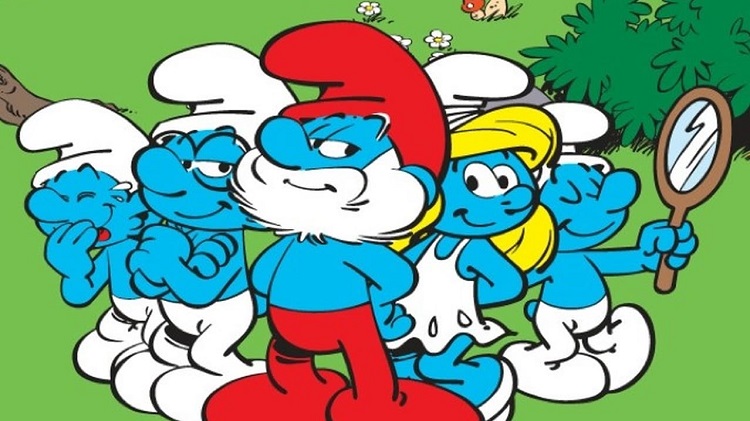
Welcome back to Saturday Morning Superstars! We’ve covered the Saturday morning cartoons of the ’60s and ’70s. Now let’s head to the decade that most GenXers can relate to: the 1980s!
Saturday morning cartoons did not end in the 1980s, but it was the final full decade in which the original three networks — ABC, CBS, and NBC — aired them. There are a number of reasons why this classic institution came to an end, but I will discuss those at a later time. For now, here’s an examination of the ‘toons that delighted the MTV generation.
Various trends from previous decades continued, including cartoons that adapted live-action TV shows and movies, as well as ‘toons based on real-life celebrities. Live-action shows on Saturday mornings continued, although two truly stand out. The networks also jumped on the bandwagon of crafting shows based on video games and toys. But the biggest trend of the decade was… well, cuteness.
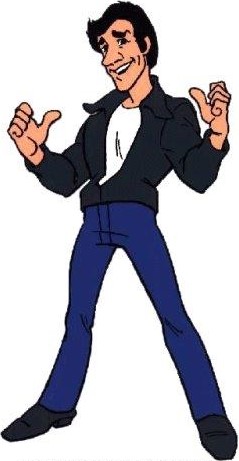
Fonz and the Happy Days Gang kicked off the decade. This show was created by Hanna-Barbera and aired on ABC. It was later joined by ‘toons based on Laverne & Shirley and Mork & Mindy.
Other animated shows based on live-action series in the 80s included The Little Rascals, The Dukes (as in “of Hazard”), Gilligan’s Planet, Punky Brewster, Alf, and The Completely Mental Misadventures of Ed Grimley (inspired by Martin Short’s popular Saturday Night Live character).
Despite its name, The Gary Coleman Show was not about the popular actor from Diff’rent Strokes, but rather the TV movie, The Kid with the Broken Halo, with Coleman reprising his role as Andy LeBeau, a child angel helping kids in danger. (Yeah, it’s a little morbid.)
Later in the decade, John Candy also starred in his own cartoon, Camp Candy. There was also Hulk Hogan’s Rock ‘n’ Wrestling, featuring the WWE superstars.

Arguably, the most popular cartoon inspired by a real person from the 80s was Mister T, on which the star of Rocky III and The A-Team was depicted as the coach of a team of multiethnic teenage gymnasts who traveled America solving crimes. The show was created by Ruby-Spears Productions and aired on NBC for three seasons and even spawned a popular breakfast cereal which was immortalized in the movie Pee-Wee’s Big Adventure. (More on that in a moment.)
The live-action movies Teen Wolf, Beetlejuice, and The Karate Kid were converted into Saturday morning cartoons, while the Star Wars franchise was briefly revived with Droids and Ewoks. Despite a high-profile launch, the two SW series didn’t prove to be very popular as interest in the brand overall was on the wane following the release of Return of the Jedi.
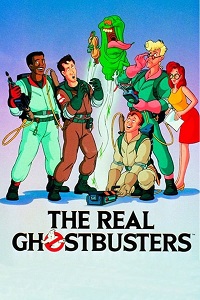
But one movie was primed for an animated adaptation. 1984’s Ghostbusters was brought to TV as The Real Ghostbusters which launched in 1987 on ABC. In addition to those airings, new episodes were also created for syndication on weekday afternoons. (I believe this was the first ‘toon to air new episodes in both time slots.) In 1988, the show was retooled into Slimer! and the Real Ghostbusters, which added comedic shorts starring the Ghostbusters’ sidekick ghost. The series lasted for seven seasons into the ’90s.
Technically, the animated versions of Fraggle Rock and Muppet Babies were also based on live-action properties, even though those starred puppets, not people.
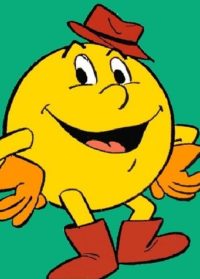
Turning celebrities and live-action TV shows and movies into cartoons was nothing new, but there was one genre that could never have existed before the 80s — video game adaptations. Video games were all the rage, with kids and teens spending all their free time (and quarters) at the arcade, and with home consoles like the Atari 2600 and then the Nintendo Entertainment System becoming increasingly common.
Pac-Man led the… er, pack with a Hanna-Barbera-crafted series that aired for two seasons on ABC. That was followed by Saturday Supercade (featuring Frogger, Donkey Kong, Donkey Kong Jr., Q*Bert, and Pitfall), Dragon’s Lair, Pole Position, and Captain N: The Gamemaster.
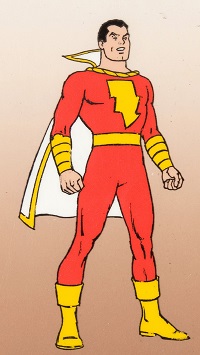
While people mainly associate Saturday mornings with cartoons, live-action programs have always had a sizeable place during those blocks. Among the live-action offerings during the 80s were Benji, Zax & the Alien Prince, Wolf Rock TV (hosted by radio personality Wolfman Jack), Pryor’s Place (starring the usually-R-Rated comedian Richard Pryor), Going Bananas (following the exploits of a super-powered orangutan), the game show Animal Crack-Ups, and Hey Vern, It’s Ernest!. In addition, a couple of shows blended live-action and animation including The Kids’ Super Power Hour with Shazam! and Kidd Video.
The Kids’ Super Power Hour with Shazam! was created by Filmation, which had created the live-action Shazam! series in the ’70s, but ironically, the Shazam! portion of this new series was animated. The live-action segments featured the characters from the companion segment Hero High.

But hands-down, the king of live-action Saturday morning in the ’80s was Pee-Wee Herman, the manic manchild alter ego of comedian Paul Reubens. Following the success of the film Pee-Wee’s Big Adventure, Reubens created and starred in Pee-Wee’s Playhouse, a frenetic, avant-garde show that felt like Mister Rogers’ Neighborhood on acid. It became a phenomenon! Pee-Wee’s Playhouse was so popular with older viewers that reruns aired on MTV.
The show featured musical contributions from Danny Elfman, and Devo’s Mark Mothersbaugh (who composed the opening and closing theme songs). Laurence Fishburn first gained notice for appearing on the show as Cowboy Curtis while S. Epatha Merkerson had the recurring role of Reba the Mail Lady. Prior to his SNL fame, Phil Hartman appeared as Captain Carl. One of the small kids that popped up at the Playhouse periodically was Natasha Lyonne.
Pee-Wee’s Playhouse aired on CBS from 1986 until 1990 and continued in reruns after that. Unfortunately, the reruns were… *ahem* yanked from the air after Reubens was busted for indecent exposure at a Florida adult theater. Even so, the series retains a cult following to this day and Reubens continues to work semi-regularly and has even dusted off the Pee-Wee Herman persona at times, including for the 2016 Netflix special Pee-Wee’s Big Holiday.
There was also a trend of either adding a baby or child to an existing series or of turning the adult characters from an existing series into children. This appears to have begun with Ruby-Spears’ Fangface and The Plastic Man Comedy/Adventure Show. In their second seasons, baby sidekicks were added. Fangface was joined by Fangpuss (“puss” being old-timey slang for “face”), his baby cousin, while off-screen, Plastic Man married his girlfriend, Penny, and had a child, known only as Baby Plas.
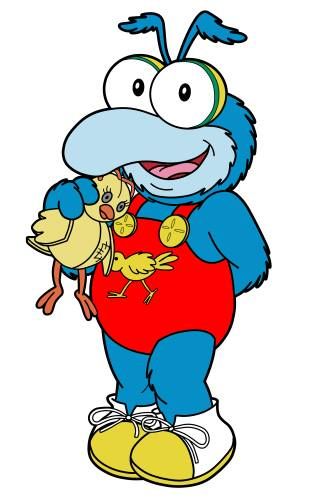
Last week, I discussed the introduction of Scrappy-Doo to the Scooby-Doo series. Add to that were the likes of Pink Panther and Sons, and Popeye and Son. And while the Muppet Babies was based on the live-action puppets The Muppets, they were likely at least part of the inspiration for The Flintstone Kids, and A Pup Named Scooby-Doo. (Those were followed by Yo! Yogi, but that didn’t debut until 1991.) On The New Archies, the classic comic book teenagers were only slightly de-aged into middle school students.
In many ways in the 80s, everything old was new again. The Little Rascals received an animated series. Many other classic properties were also given new leases on life. Richie Rich, Tom and Jerry, Tarzan, the Lone Ranger, Zorro, Popeye, Mighty Mouse, Heckle & Jeckle, The Flintstones, Charlie Brown and Snoopy, The Pink Panther, Mighty Mouse, The Archies, Beany and Cecil, and Raggedy Ann and Andy all received new cartoons. (As did Superman, post-Superfriends.)
But the most successful revival was Alvin and the Chipmunks, a reboot of The Alvin Show which had aired on CBS in the early 60s. The reboot, originally produced by Ruby-Spears Enterprises, aired on NBC for a whopping eight seasons, buoyed by the titular band’s high-pitched covers of popular radio/MTV hits of the era including Michael Jackson’s “Beat It” and Billy Joel’s “Uptown Girl” just to name two.
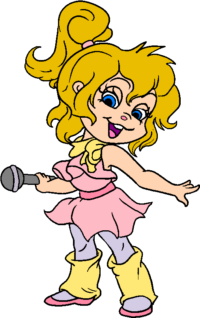
In addition to Alvin, Simon, and Theodore, this new series starred their female counterparts, The Chipettes — Brittany, Jeanette, and Eleanor. The characters have since been revived in live-action/animation hybrid movies and a newer cartoon, ALVINNN!!! and the Chipmunks, is going into its seventh season on Nickelodeon.
The Chipmunks and Muppet Babies were also part of a wave of shows that upped the cute-quotient, perhaps to appeal to young girls. (I… guess? I mean, I know that all girls aren’t into cutesie stuff, but I watched all this crap, so…) Other shows that fit the bill included The Snorks, Shirt Tales, The Littles, Foofer, Kissyfur, Care Bears Family, Garfield and Friends, and others. Ewoks was also similar and was seemingly meant to appeal to younger, preschool-age children.
The networks also tried to jump on the toy bandwagon, but the results — Rubik the Amazing Cube, Lazer Tag Academy, Monchichi, My Pet Monster, and Pound Puppies — didn’t quite resonate the way that shows like He-Man and the Masters of the Universe and G.I. Joe did in syndication.
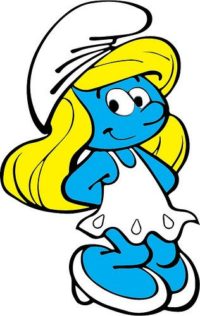
But the king of cute and Saturday mornings in the ’80s PERIOD was undoubtedly The Smurfs. Created by comic artist Peyo, The Smurfs had starred in their own strips in his native country, Belgium, where they are known as Les Schtroumpfs. They were first brought to life in animation in the 1976 film La Flûte à six Schtroumpfs (The Smurfs and the Magic Flute), which was released in U.S. theaters in 1983 after the success of the Hanna-Barbera cartoon.
The Smurfs are tiny blue creatures that live in a forest. In the beginning, there were 100 of them, but that number grew over time. The majority of Smurfs are identical and wear the same basic white pants and hat, although their wizened leader, Papa Smurf dresses in red. Their houses are made of mushrooms. Their archenemy is Gargamel, an inept sorcerer who wants to capture The Smurfs to either turn them into gold or eat them.
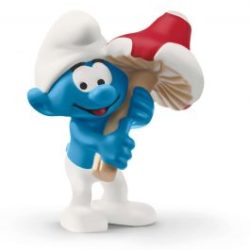
The Smurfs onslaught in the US kicked off in 1981 when their Hanna-Barbera-produced series first aired on NBC. It was a sensation that exploded beyond Saturday mornings, becoming one of the most highly-rated cartoons ever and winning multiple Emmy Awards. The plastic figurines, produced by Schleich, became sought-after playthings that kids loved to collect and trade. The little blue imps were soon one of the most licensed properties on the planet and appeared on all manner of items — clothing, bedding, dishware, food — you name it, and they found a way to slap a Smurf on it!
The Smurfs lasted for nine seasons and a staggering 256 episodes. The original series is still syndicated and like Alvin and the Chipmunks, The Smurfs have gone on to star in modern movies that have endeared them to an all-new generation.
But the ’80s weren’t all about cute. In the 60s, superhero shows were all the rage until parents’ groups like Action For Children’s Television (ACT) had them taken off the air. More comedic shows became the standard, and while superhero shows made a comeback in the 70s, thanks to Hanna-Barbera/ABC’s Superfriends, they never again took full ownership of Saturday mornings.

But a few adventure shows broke through and remain fondly remembered today, including Ruby-Spears’ Thundarr the Barbarian. Set in a post-apocalyptic future, the show followed the titular Barbarian and his companions, Princess Ariel, a sorceress and scholar, and Ookla the Mok, who was inspired by Chewbacca. They traveled the Earth, centuries after modern society had been destroyed thanks to a “runaway planet.” As a result, episodes were peppered with the devastated remains of the modern world, like the Statue of Liberty and Golden Gate Bridge. But perhaps Thundarr‘s biggest attraction was the character designs by comics legend Jack Kirby. Thundarr the Barbarian initially aired on ABC for two seasons from 1980-81.
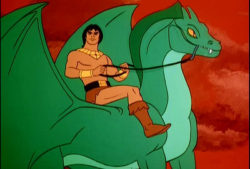
Filmation’s Blackstar was intended to be the first animated action series with an African American lead. Unfortunately, CBS pushed back and the character was depicted as ethnically ambiguous. (It has since been pretty widely accepted that he is Native American, as his full name, John Blackstar, “sounds” Native American.)
American astronaut John Blackstar was sucked into a black hole and found himself the defender of the alien planet Sagar. Along with his allies Mara the sorceress and shapeshifter Klone, he protected the inhabitants of Sagar, including the dwarf-like Trobbits (a combination of “trolls” and “hobbits”) from the evil Overlord.
It was reportedly Blackstar that enticed Mattel to turn to Filmation to craft He-Man and the Masters of the Universe since it had a similar “swords and sorcery” theme.
Blackstar aired on CBS in 1981-82, and like Thundarr, was rerun after that.
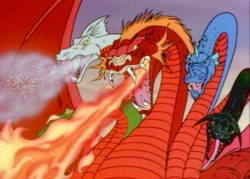
Speaking of “swords and sorcery,” Marvel Productions delivered Dungeons & Dragons, based on the tabletop roleplaying game. Unfortunately, ACT reared its ugly head again and attacked the show and its network, CBS, claiming that Dungeons & Dragons was “the most violent show on TV.” (This despite the fact that it premiered in 1983, the same year that The A-Team debuted.) The show lasted for three seasons and remains a cult favorite today, despite the protests.
Heroes that originated in comics remained present. Superfriends continued, and Superman even starred in his own cartoon, which aired for a single season in 1988.
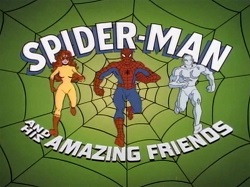
Marvel stormed NBC’s Saturday lineup with Spider-Man and His Amazing Friends, featuring the publisher’s flagship wall-crawler, former X-Man Iceman, and new character Firestar. The series featured frequent guest appearances from other comic characters including Captain America, Thor, and the X-Men.
The cartoon was created by Marvel Productions, formerly known as DePatie–Freleng Enterprises, which had delivered The New Fantastic Four and Spider-Woman in the 70s. Spider-Man and His Amazing Friends lasted for three seasons on NBC, starting in 1981, and was rerun after that. (It was even still airing just a few years ago on DisneyXD.)
In 1982, it was paired with another Marvel Productions series, The Incredible Hulk. While only one season was produced, like Spider-Man, it was rerun afterward.
Other action-oriented ‘toons from the ’80s included Drak Pack (featuring the kids of famous monsters like Dracula), Goldie Gold and Action Jack, The Lone Ranger, Zorro, Space Stars (including revivals of Space Ghost and The Herculoids), Mighty Orbots, Turbo Teen, and Wildfire.
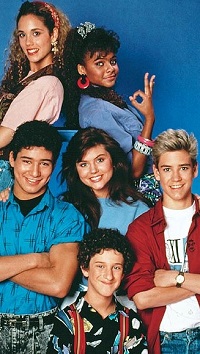
In 1989, a new type of show premiered, the live-action sitcom Saved By The Bell. It was a retooling of a program called Good Morning, Miss Bliss (which had previously aired on the Disney Channel which was still in its infancy at that time). While Good Morning, Miss Bliss was wholesome, Saved By The Bell upped the mischief factor, following the adventures of the Ferris Bueller-esque wiseass Zack Morris (Mark-Paul Gosselaar), his nerdy sidekick, Samuel “Screech” Powers (Dustin Diamond), and fashionista Lisa Turtle (Lark Voorhies), all of whom had appeared on Good Morning, Miss Bliss. Also carried over from the previous show was Dennis Haskins as Principal Belding. Added for NBC’s version were Tiffani-Amber Thiessen as the sweet (but still hot) girl-next-door Kelly Kapowski, Elizabeth Berkley as the brainy feminist Jessi Spano, and Mario Lopez as jock Albert Clifford “A.C.” Slater.
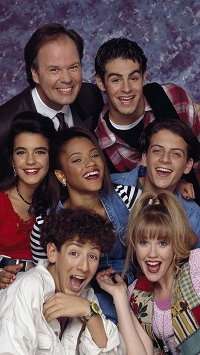
Saved By The Bell lasted for four seasons on NBC, from 1989 until 1993, and was retooled for prime time as Saved By The Bell: The College Years, which flopped and was canceled after one season. A sequel series, Saved By The Bell: The New Class debuted on Saturday mornings, in 1993. It featured an all-new cast of teens, with only Haskins returning from the previous incarnation. (Diamond joined in Season 2.) Remarkably, The New Class lasted longer than the original– seven seasons — even though I don’t know a single person who has seen it.
A high-profile reboot, simply called Saved By The Bell, recently hit Peacock, starring Lopez and Berkley. Gosselaar and Thiessen have recurring roles. Voorhies will appear in upcoming episodes.
The original Saved By The Bell opened the door for more live-action sitcoms on NBC’s Saturday mornings, including California Dreams. These shows ultimately led to… well, like EVERY SHOW on Nickelodeon and The Disney Channel for the last 30 years.
Unfortunately, the massive success of Saved By The Bell ultimately led to NBC killing its Saturday morning cartoon lineup entirely. But that’s getting a bit ahead.
Check back next week for a look at the ’90s… including the end of cartoons on two of the original networks. (Well, kind of…)



